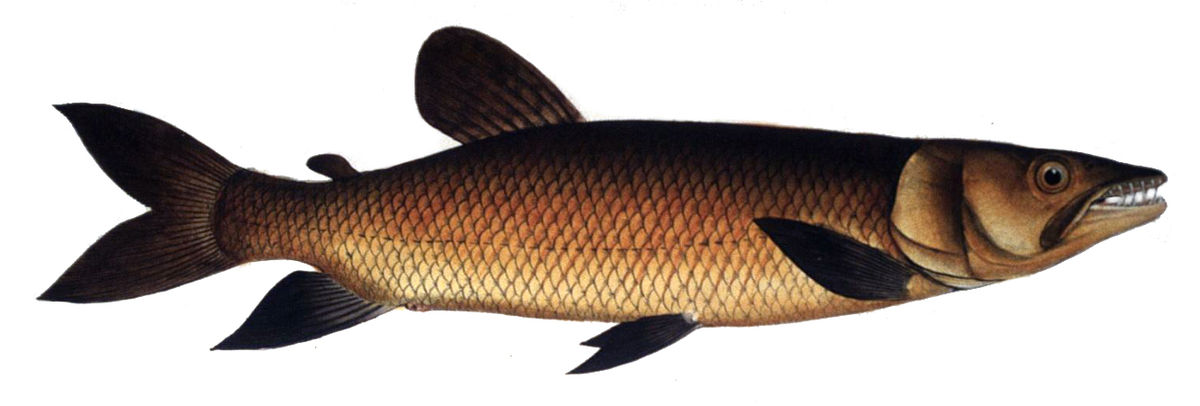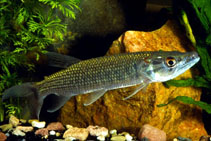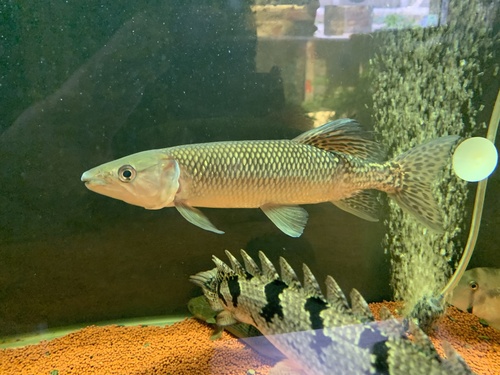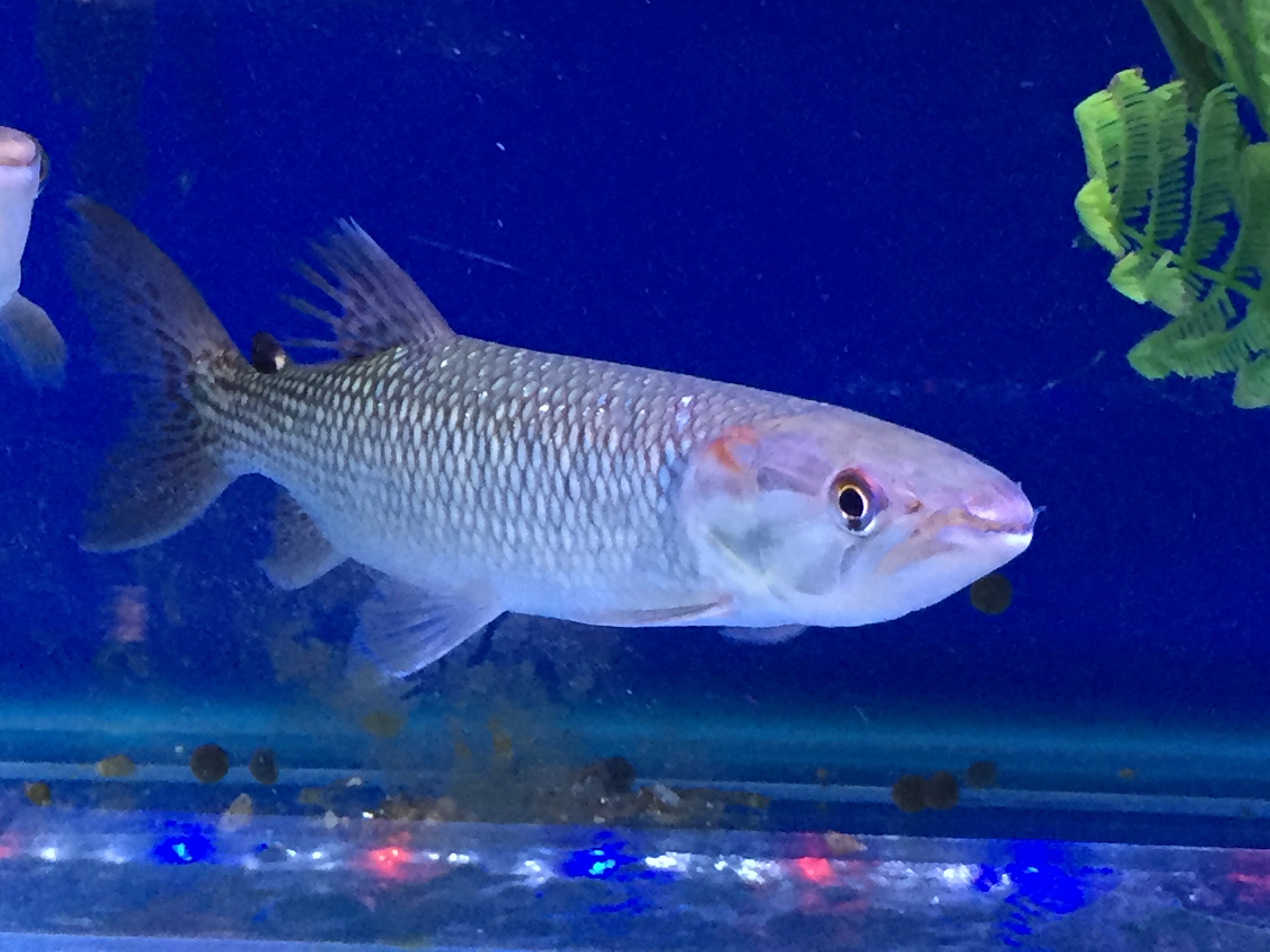A Guide to the Care of the African Pike Characin (Hepsetus odoe)
- Thread starter Polypterus_36
- Start date
You are using an out of date browser. It may not display this or other websites correctly.
You should upgrade or use an alternative browser.
You should upgrade or use an alternative browser.
This is a video that I found that is a perfect example of ATF and odoe pike not being good tankmates:
Just a question since I’m planning to get one for my community tank. Would you say they prefer being in groups or just one lone pike among others ?
Ive seen them kept in small to large groups but I wouldn't advise just a pair. Also, cant go wrong with just 1.
A good video showing interesting behavior of 2 odoe pike (male and female) when housed in the same tank:
Even in a large aquarium, the 2 odoe pike still fought and made a pecking order, with the smaller male on top.
Even in a large aquarium, the 2 odoe pike still fought and made a pecking order, with the smaller male on top.
what kind of floating plants are those in the scape picture you posted?Odoe Pike Care Guide
View attachment 1449013
Photo credit: @polypterusboyz on Instagram
Introduction:
The odoe pike (Hepsetus odoe) is a predatory African pike characin that resides in lakes, rivers, and swamps in western sub-Saharan Africa.
Classification:
Kingdom: Animalia
Phylum: Chordata
Class: Actinopterygii
Order: Characiformes
Family: Hepsetidae
Genus: Hepsetus
Species: odoe
General Housing Requirements:
Due to their shy and skittish nature, odoe pike require a larger aquarium size of around 5 feet by 2 feet by 2 feet (150 gallons). Many individuals have been known to ram themselves into walls when spooked if their aquarium is too small. Unlike the African tiger fish, odoe pike prefer deeper, slower-moving but well-oxygenated waters. They love to hunt in marginal vegetation, so a floating plant would be ideal. Also, make sure that you have a tight-fitting lid, as they like to jump.
Feeding:
Odoe pike are piscivorous, meaning that they mainly eat fish in the wild. In the aquarium setting, they can eat a variety of carnivore pellets, prawns, and fish fillet. Some individuals can be difficult to wean off of live foods, but most can easily be trained to eat prepared foods. I got very lucky with my Hepsetus odoe, as he eats pellets and frozen foods.
Furniture:
Odoe pike do require some pieces of bogwood to hide behind if scared. But, do not fill your tank with hardscape because if the odoe ever dashes, it might severely hurt itself. I would recommend to have your tank set up as 1/4 bogwood and the rest open space. This allows the odoe pike to dash safely if spooked.
Here is a good example of what your odoe pike's tank should look like furniture-wise:
View attachment 1449016
This tank is just a grow out for my odoe pike, as he will be moved to a larger one soon.
Compatibility:
Odoe pikes in general are aggressive towards other, similar-looking fish, so fish like apollo sharks, bala sharks, tarpon, and other characins would be poor tankmates for this fish. I have seen multiple odoe pike housed in one tank, but this is very rare, as most hate the presence of other odoe pike. Avoid keeping aggressive tankmates like some species of larger South American cichlids. Some suitable tank mates are giraffe catfish, Polypterus, spiny eels, and African arowana.
Size and Growth Rate:
Odoe pikes in the wild can reach sizes of 26 inches, but in captivity, they normally max out at around 12-14 inches. They have very fast growth rates in the first few years of their lives and then slow down at around 9 inches.
Distribution and Natural Habitat:
Odoe pike are found in western sub-Saharan Africa. They reside in lagoons, rivers, and swamps in marginal vegetation. But when their main predator Hydrocynus forskahlii is absent, they venture out into deeper waters.
Sexing:
Males have a rounded and elongated dorsal fin that reaches the andipose fin.
Females have an edged and shorter fin that does not reach the andipose fin.
Females are normally bulkier in body size, and males normally show more coloration.
Here are the fins:
View attachment 1449015
Base Photo credit: @polypterusboyz on Instagram
Male:
View attachment 1449060
Photo credit:HarleyK
Female:
View attachment 1449061
Photo credit:HarleyK
Breeding:
Odoe pike have been bred before in captivity, but this is extremely rare.
HarleyK has done it before.
Click this link fromHarleyK to see the spawning process of odoe pike in more detail:
They spawn using bubble nests where babies will live until free swimming.
A bubble nest from a pair of odoe pikes:
View attachment 1449052
Photo credit:HarleyK
Newly hatched odoe pike fry hanging in the parents' bubble nest:
View attachment 1449053
Photo credit:HarleyK
Young free-swimming fry with parents:
View attachment 1449064
Photo credit:HarleyK
Temperature and Water Requirements:
Temperature: 76-83 F
PH: slightly acidic to neutral 6.0-7.3
KH: 40-80 ppm
GH: 120-180 ppm
Notes and Tips:
When maintaining the odoe pike's aquarium, please be careful, as there have been many cases of odoe pikes attacking fingers. They have very sharp teeth, so a bite would most likely draw blood.
View attachment 1449028
Photo credit: @polypterusboyz on Instagram
Other Species in the Hepsetus Genus:
Hepsetus curvieri
Hepsetus kingsleyae
Hepsetus lineatus
Hepsetus microlepis
Hepsetus occidentalis
Credits:
A big thanks to @polypterusboyz on Instagram for the photos of his odoe pike.
Check him out: https://www.instagram.com/polypterusboyz/
Thank youHarleyK for allowing me to use your pictures in this guide.
Sources/Informative Sites:
If you are planning on buying an odoe pike, please make sure to do your research and check out these sites!
Hepsetus odoe (African Pike Characin) — Seriously Fish
www.seriouslyfish.com

Hepsetus odoe - Wikipedia
en.wikipedia.org

Hepsetus odoe summary page
www.fishbase.se
African Pike Characin (Hepsetus odoe)
Hepsetus odoe, the African pike characin is a predatory freshwater characin belonging to the family Hepsetidae. It was formerly considered that there was a single species of Hepsetus pike characin but recent studies have led to the species being split and Hepsetus odoe sensu stricto is the west...www.inaturalist.org
Odoe Pike Care
I was gonna buy a odoe pike soon, You guys have any stories of experiences with them? Are they hard to keep? Are other agressive predatory fish good tank mates? Any info will be appreciated.www.monsterfishkeepers.com

African Pike Characin-Hepsetus odoe
Expert facts, care advice, feeding tips and breeding information about the African Pike Characin (Hepsetus odoe) for freshwater aquarium enthusiasts.www.fishkeeper.co.uk
If you have any questions or notice any mistakes in my writeup, please reply below.
If I do have any information wrong, please reply respectfully. I am 14, and this is my first time creating an informative writeup.
Thanks,
Polypterus_36
Amazon frogbitwhat kind of floating plants are those in the scape picture you posted?
ok thanks it looks really good so I think im gonna try it outAmazon frogbit


